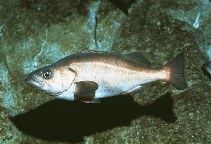| Family: |
Sebastidae (Rockfishes, rockcods and thornyheads), subfamily: Sebastinae |
| Max. size: |
56 cm TL (male/unsexed); max.weight: 1,540.0 g; max. reported age: 35 years |
| Environment: |
demersal; brackish; marine; depth range 0 - 425 m |
| Distribution: |
Eastern Pacific: Queen Charlotte Sound, British Columbia, Canada to Magdalena Bay, Baja California Sur, Mexico. |
| Diagnosis: |
Dorsal spines (total): 13-13; Dorsal soft rays (total): 13-16; Anal spines: 3-3; Anal soft rays: 7-9; Vertebrae: 26-26. Head spines very weak - preoculars present, nasal, supraocular and parietal spines usually absent, postocular, tympanic, coronal and nuchal spines absent; chin projects outward; preopercular spines fairly strong; anal fin small and rear edge slanted posteriorly, 2nd anal spine short; body slender (Ref. 27437). Caudal fin moderately indented (Ref. 6885). Pinkish red to copper pink, white ventrally; lateral line in bright red zone; caudal fin dusky (Ref. 27437). |
| Biology: |
Adults frequent deep rocky reefs as well as sand and mud bottoms; young are pelagic (Ref. 36715) and occur in shallower waters (Ref. 2850). Feed on euphausiids (Ref. 6885), krill, small squids and fishes (Ref. 2850). Viviparous, with planktonic larvae (Ref. 36715). Marketed fresh and frozen; eaten fried, boiled, microwaved and baked (Ref. 9988). |
| IUCN Red List Status: |
Not Evaluated (N.E.) Ref. (130435)
|
| Threat to humans: |
harmless |
Source and more info: www.fishbase.org. For personal, classroom, and other internal use only. Not for publication.
